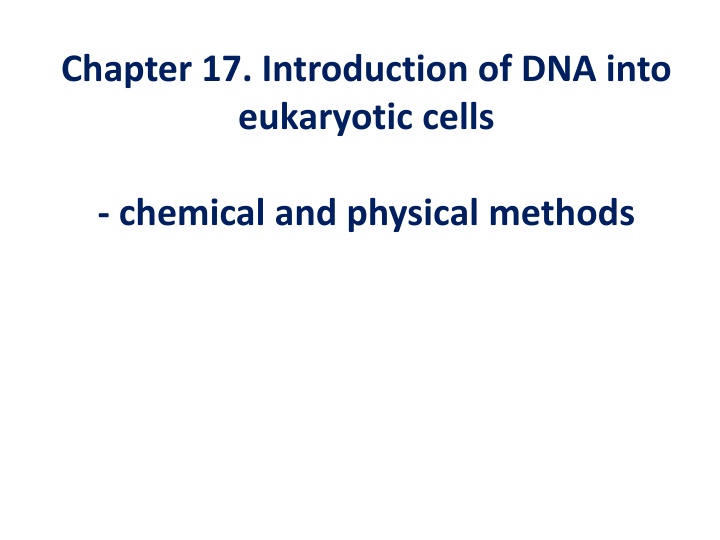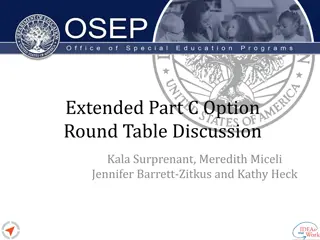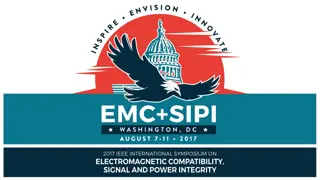
Introduction of DNA into Eukaryotic Cells: Methods and Goals
Learn about the various chemical and physical methods used to introduce DNA into eukaryotic cells, along with the different end goals such as transient expression assays and stable integration. Discover how cells are selected and screened for transformation, and explore examples of methods like cation/heat shock, liposome, injection, electroporation, and more. Understand the terminology related to DNA introduction in bacterial, eukaryotic, and viral vector systems.
Download Presentation

Please find below an Image/Link to download the presentation.
The content on the website is provided AS IS for your information and personal use only. It may not be sold, licensed, or shared on other websites without obtaining consent from the author. If you encounter any issues during the download, it is possible that the publisher has removed the file from their server.
You are allowed to download the files provided on this website for personal or commercial use, subject to the condition that they are used lawfully. All files are the property of their respective owners.
The content on the website is provided AS IS for your information and personal use only. It may not be sold, licensed, or shared on other websites without obtaining consent from the author.
E N D
Presentation Transcript
Chapter 17. Introduction of DNA into eukaryotic cells - chemical and physical methods
Two different end goals of DNA introduction 1. Transient expression assays Plasmid DNA is introduced into cell and nucleus Gene(s) on plasmid transcribed in nucleus Expression and effect (phenotype) is recorded Plasmid DNA is degraded 2. Stable introduction of DNA into chromosome The rare event of plasmid DNA integration into chromosome is selected or screened for, and cells with the construct collected Cells are maintained either as cell culture or used to regenerate transgenic organism
Selection for transformed cells (kill the ones that don t have the construct) 1. Plasmid carries gene that produces protein that detoxify chemical in the medium 2. After transformation, cells are grown in medium that kills non-transformed cells 3. Transformed cells are identified by their ability to continue to divide Example: The Hygromycin PhosphoTransferase (HPT) -encoding gene (from E. coli) can detoxify hygromycin, a chemical that inhibits translation by ribosomes. HPT and hygromycin is often used to select for transformed animal and plant cells.
Screening for transformed cells (identify transformed cells among non-transformed) 1. Plasmid carries gene that produces protein that can be visualized, either directly or by an assay that marks the cell (without killing it) 2. After transformation, cells are screened for marked cells. 3. Transformed cells are collected and grown. phase contrast imaging shows all cells Excitation with blue light results in green light emission from GFP-transformed cells. Example: The Green Fluorescent Protein (GFP)-encoding gene
Examples of methods Chemical methods Cation/heat shock method (also bacteria) Liposome method Physical methods Injection Electroporation(Also bacteria) Micro-projectile bombardment
REMINDER: Terminology Transformation (introduction of DNA to bacterial cells) Transfection (introduction of DNA to eukaryotic cells Transduction (introduction of DNA to prokaryotes or eukaryote cell culture through a viral vector)
Cation/heat shock method to transform yeast cells Method is almost identical to what you have used for transformation of E. coli cells Yeast is the by far most studied eukaryotic organism when it comes to basal cellular mechanisms and metabolism. This analysis is deeply dependent on the ability to generate various gene constructs and introduce them into cells for analysis of effects.


















